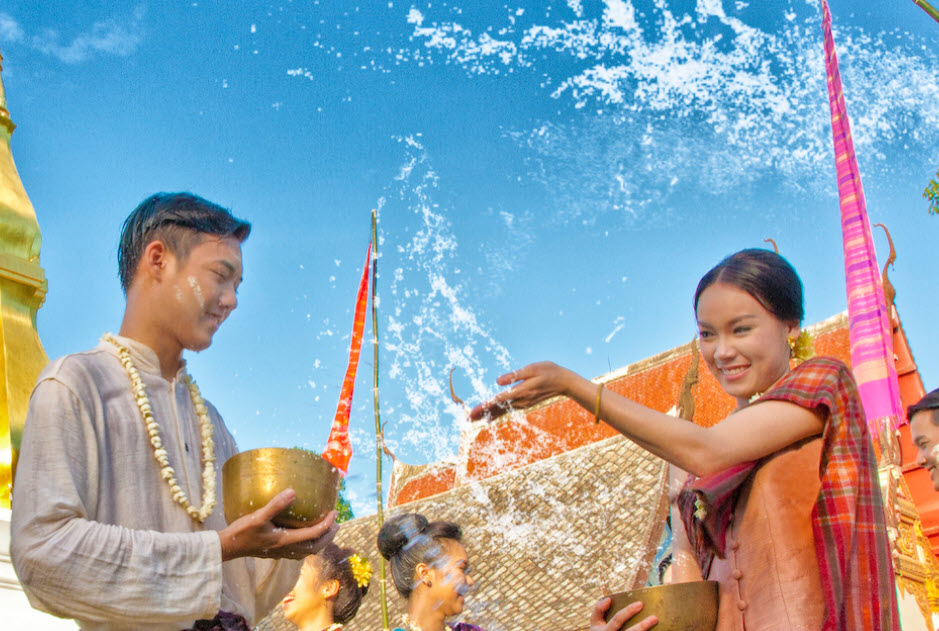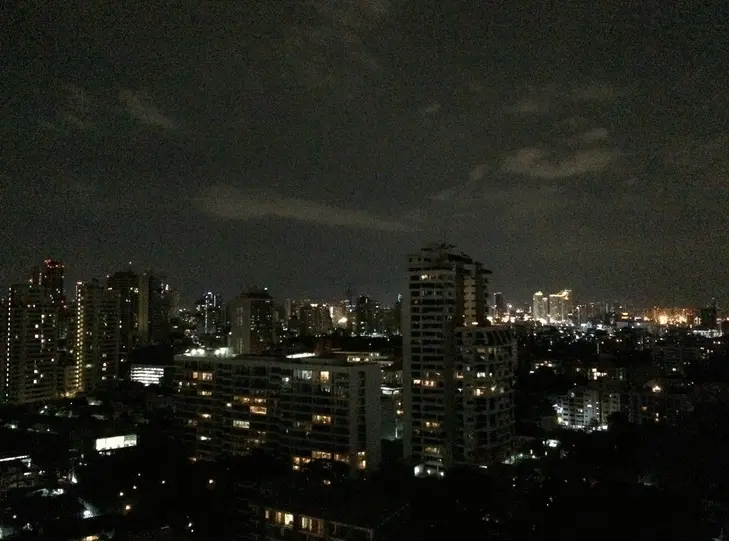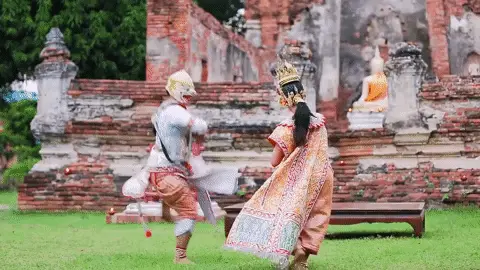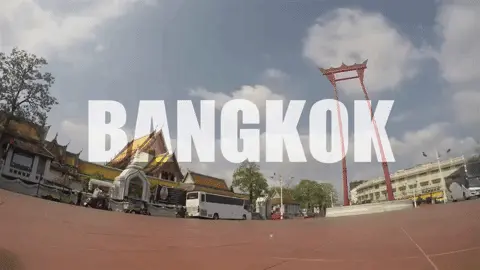Tradition and Culture

Rating: 5/5 (1 votes)
Bangkok attractions
Attractions in Thailand
Traditions are activities that are continuously practiced that are unique and important to society, such as dress, language, culture, religion, arts, laws, morality and beliefs, etc., which are the source of culture of societies of various races until they become It's a tradition. national and passed down in order If the tradition is already good, then preserve it as national culture. If it is not good, then correct it. Change according to the seasons
All traditions are influenced by the external environment that enters society, adopting various practices to mix in. Living a traditional life can therefore be called the way of life of society, especially religion, which has the greatest influence on Thai traditions. Various temples in Thailand reflects the influence of Buddhism on Thai society. and pointed out that Thai people give The importance of nurturing Buddhism with beautiful arts for use in religious ceremonies since ancient times, etc.
The word tradition according to the Institute of Thai Language Dictionary defines the meaning of tradition as a custom, a pattern. Various words can be separated into the meaning "tradition". precedent Tradition means that have been popularly used And when taken together, it has the meaning The behavior that most people adhere to is a pattern. and has continued the practice Until it becomes a model for future generations to continue to follow.
In summary, tradition refers to rules and regulations that determine behavior in various situations. that people in society have continued to adhere to If any person in that society violates the law, they will usually be criticized by society. Traditions in society at the national level are mixed together as one. And there are some differences according to local popularity. But most of them have a purpose. and how to act as one There are only minor parts that are added or eliminated in each locality. For Thai traditions, they are often related to Belief in Buddhist beliefs and Brahmanism since ancient times
Type of tradition
1. Tradition or moral law means traditions that everyone must follow. If anyone violates the law and refrains from doing it, it is considered as Traditional wrongs and vices are related to the morality of the people at large in society. And what can be seen in Thai society is the expression of gratitude that children should have towards their fathers. Mothers, when you are old, it is your duty to take care of your children. If your children do not take care of you, society will punish you for being ungrateful. It is considered evil and no one wants to associate with it. The above example is a Thai tradition. We should not use this tradition to Judgment of people in other societies
2. Traditions or institutions are traditions that directly lay down rules, that is, clearly lay down ceremonial rules, which will be applied to social institutions as institutional traditions. But such traditions are subject to change according to suitability and the era.
3. Traditions or traditions refer to various practices in daily life that have been practiced until now. used to being normal It is about an ordinary situation that is of no great importance to the welfare or needs of society. And it is something that everyone generally practices until it becomes a habit or a general standard in that society. Traditions originate from No one knows or is interested in investigating the exact history. It may be something that already exists in society or has recently emerged and is widespread in society. Which is normal behavior in general, no need to waste time thinking about small matters, such as paying respect to elders, a tradition that people do not Get attention on how it came to be, but everyone should act. If they don't act, they will be gossiped about etc.
Culture generally means Patterns of human activity and the symbolic structure that makes the activity salient. and is important to the way of life which is the behavior and things that people in the production group create By learning from each other and shared among their own people which can change according to the era and suitability But if it's in a civics subject, it means something human. Change for prosperity and continued on
Culture can be expressed in part through music, literature, painting, sculpture, drama and film, although it is sometimes said that culture is all about consumption and consumer goods, such as high culture, low culture, folk culture. or popular culture, etc. But anthropologists generally refer to culture as It is not just a consumer product. But it also includes the process of producing products and giving meaning to those products. It also includes social relationships. and practices that bring objects and production processes together. In the eyes of anthropologists, it includes technology, art, science, and moral systems.
Culture in any region can be influenced by contact with other regions, such as colonization, trade, immigration, mass communication, and religion and belief systems. Regardless, religion has always played a role in culture throughout human history.
Culture is divided into 2 types:
1. Material culture is tools and appliances that humans use in their daily lives for physical happiness, including vehicles and homes. as well as equipment to protect oneself from all dangersใ
2. Psychological culture It is about the restraints of the human mind. To gain wisdom and a beautiful mind, including religion, morality, ethics, moral principles, as well as art, literature, and traditions and customs.
Most anthropologists tend to use the word "culture" in terms of the general ability of people to identify it. Categorize and express their experiences in symbolic ways. People have used this ability to identify stories and things that have happened among humans for a very long time. However, primatologists have also identified such cultural characteristics in apes or primates, which are A group of animals that have been the closest species to humans for a long time as well. and archaeologists focus only on the culture in which the story is told. (remains of human activities) Meanwhile, social anthropologists look at the interactions of societies. Status and institutions Cultural anthropologists, on the other hand, focus on norms and values.
This separation It shows the different conditions that depend on the different tasks of anthropologists. and the need to focus on research points must be clear. Therefore, it does not necessarily reflect theories of culture which differ according to their narrative, social and normative aspects, nor does it necessarily reflect the competition between different theories of culture.
Characteristics of Thai culture
1.Thai culture is an agricultural culture. Since the past, most Thai people have been engaged in agriculture. especially rice cultivation which is the main occupation of Thai people, such as the first ceremony and the rice blessing ceremony, etc.
2. Thai culture has ritual plans, steps, and elements in many ceremonies, such as funeral rites. and wedding ceremonies, etc.
3.Thai culture is ideas, beliefs, and principles that are a body of knowledge that has been accumulated and passed down from generation to generation. Such as beliefs about sacred things and religion, values of women's self-preservation, etc.
4.Thai culture is a mixed culture. In addition to Thai people having their own culture, There is also the adoption of the culture of other nations, such as worship from India, building houses using concrete from Western culture. or gardening from Chinese culture etc.
5.Thai culture is a culture that has been influenced by Buddhism, whether it be the way of life. Social norms, arts, literature, and rituals, as well as various traditions such as giving alms to monks, giving alms to monks, giving alms to monks, and offering Kathin. and the tradition of offering food to monks, etc., until it can be said that Buddhism is an important foundation for Thai cultural characteristics.
Preserving Thai Culture
Preserving Thai culture It requires the cooperation of all Thai people. The methods are as follows.
1. Study, research and research Thai culture and local culture. both those that have already been collected and those that have not yet been studied to know the meaning and the importance of culture as a true Thai heritage. This knowledge is considered the foundation of living life. to see value cause acceptance and put it to appropriate use in the future.
2. Encourage everyone to see the common values of preserving national cultural identity. and local to create understanding and give confidence to the people in making changes and respond appropriately to other cultural trends.
3. Campaign for the public and the private sector aware of the importance of the culture that everyone must share responsibility for promoting and supporting Coordinate knowledge services, academics, and funds for organizing cultural activities.
4. Promote and exchange culture within the country. and international By using art and culture as a medium to build relationships between each other.
5. Create attitudes, knowledge and understanding that everyone has a duty to enhance, restore and maintain the natural and cultural environment that is a national treasure. and has a direct effect on everyone's well-being.
6. Create a cultural information network system to serve as a center for disseminating and publicizing works. for the public to understand can choose and decide and change it to suit your lifestyle. The mass media should play a role in promoting and support more cultural work as well.
Thai traditions from 4 regions, traditions that people know all over the country and can be divided into many parts There are also traditions and beliefs that each community has continued to do, which can be further divided into northern traditions, central regions, and northeastern traditions. (Northern tradition) and Southern tradition, etc.
Northern traditions and northern culture, the northern region, or what most people call Lanna It is a land of diverse cultures and traditions that are no less charming to explore than other regions of Thailand because it is a city full of fascination. Including tourist attractions, history, local language, dress, local games, local food, northern traditions. and northern culture It is an activity that has been carried out for a long time.
Central region traditions Central culture The central region has as many as 22 provinces, including Phitsanulok Province. Sukhothai Province Phetchabun Province Phichit Province Kamphaeng Phet Province Nakhon Sawan Province Lopburi Province Chainat Province Uthai Thani Province Singburi Province Ang Thong Province Saraburi Province Phra Nakhon Si Ayutthaya Province Suphanburi Province Nakhon Nayok Province Pathum Thani Province Nonthaburi Province Bangkok Province Nakhon Pathom Province Samut Prakan Province Samut Sakhon Province and Samut Songkhram Province The characteristics of the central region are river basin plains. Therefore, most people in the central region work in agriculture. raising animals and both freshwater and saltwater fishing, and trading is another profession that is very popular among people in the central region because the central region There will be convenient transportation routes both by land and water, making it very suitable for doing business.
Northeastern traditions Northeastern culture Important Thai traditions Isaan has limited natural resources. From the dry weather in the dry season Water will flood both sides of the river. As a result, the majority of the population lives on the hills not far from the river, reflecting the wisdom of settlement. and adaptation to the environment The area in the northeast was formerly in the area of influence from Khmer civilization. and is the residence of various groups of Thai-Lao people, which makes Mixing different cultures together and accumulated and passed on to become Isaan culture that has characteristics unique and interesting.
Southern traditions and Southern culture. The South is a region of Thailand located in the southern part of the country. Next to the central region on the Indian peninsula. Bordered by the Gulf of Thailand on the east side and the Andaman Sea on the west side, it has a total area of 70,715.2 square kilometers. The length from north to south is approximately 750 kilometers. Every province in the region has coastal areas. Except for Yala Province, most of the area is plain. There are important mountain ranges including Tanaosri Mountain Range Phuket Mountains Nakhon Si Thammarat Mountain Range.
The Sankalakiri mountain range is the border between Thailand and Malaysia. The mountain ranges in the south are 1,000 kilometers long and short. Important rivers include the Pum Duang River, the Tapi River, the Pattani River, the Tha Thong River, and the Takua Pa River. Pak Phanang River and Trang River The beaches on the Gulf of Thailand are formed by high elevation, with long, smooth, wide coastal plains and shallow waters. The Andaman Sea has a sunken coast, low plains, indented beaches, rocks, and steep cliffs.
Comment
| Keyword (Advance) |
 Region
Region
 Art, Culture and Heritage
Art, Culture and Heritage
 Art, Craft Centres, Tradition(36)
Art, Craft Centres, Tradition(36)
|













